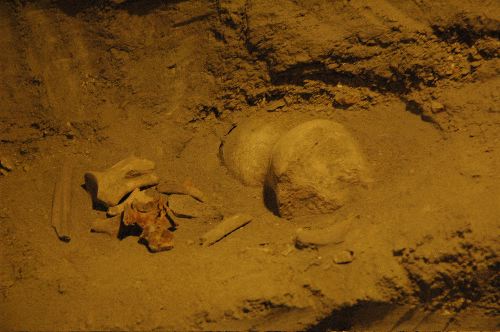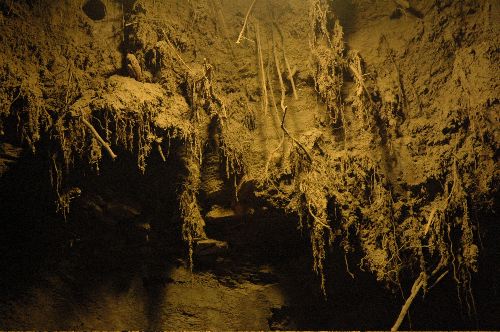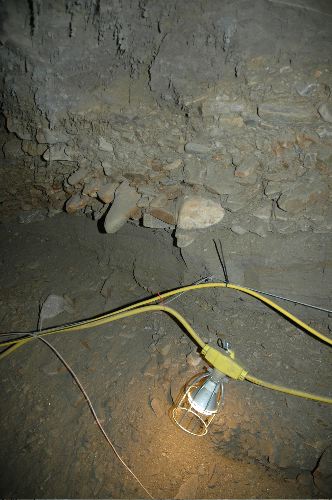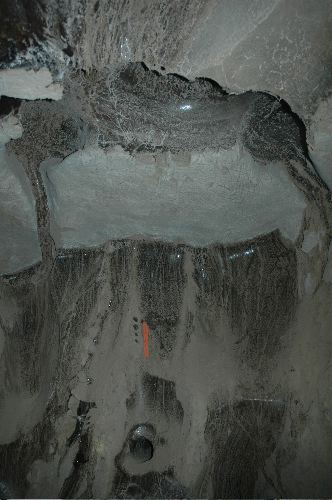Hola los cientificos de Oyster! Preparan a viajar dentro de la tierra! Hard hat? Check! Flashlight? Check? Ready to travel back 40,000 years to the Pleistocene era? CHECK! Entering the Permafrost tunnel was like entering a fairyland of icicles and snowflakes. Oh right, except for the smell of decomposition. Alright, back-up. So what is a Permafrost tunnel?
In the case of the CRREL tunnel in Fox, Alaska it's a 360 foot-long hole through an old mining hill. The ground is permanently frozen, as in frozen all the time! Scientists are looking at layers upon layers to reconstruct history through clues that they find in the sediment. Looking closely as you walk around, you can see mammoth bones, roots and stones from thousands of years ago poking through the silt. Some of the plant matter is still green with chlorophyll. Can you believe that?! The most amazing thing to me was that when scientists take samples back to the lab and put them in water, some of the microorganisms come back to life and start swimming around under the microscope!
These pieces of history became trapped in the silt and gravel over time as sediment was laid down and then lithified. If you don't know the words *sediment, lithification or permafrost,* do a little more research to find out what they mean! Looking back through the levels of sediment is an organic timeline. Each layer represents a different period of time that had its own unique plants, animals and climate composing the environment. Some of the inorganic clues that help the scientists recreate events in the past are *ice wedges*, huge holes created as water filled an area in and then froze. Each year a new layer adds to the lens and the ice expands further and further. Some of these can get as big as a swimming pool!
Take a look at the pictures below. What clues can you find?
 What animal do you think these came from?
What animal do you think these came from?
 What do you think these roots belonged to?
What do you think these roots belonged to?
 Look for clues in the sediment!
Look for clues in the sediment!
 This ice wedge is thousands of year old! Does this look different from what's in your freezer?
This ice wedge is thousands of year old! Does this look different from what's in your freezer?
